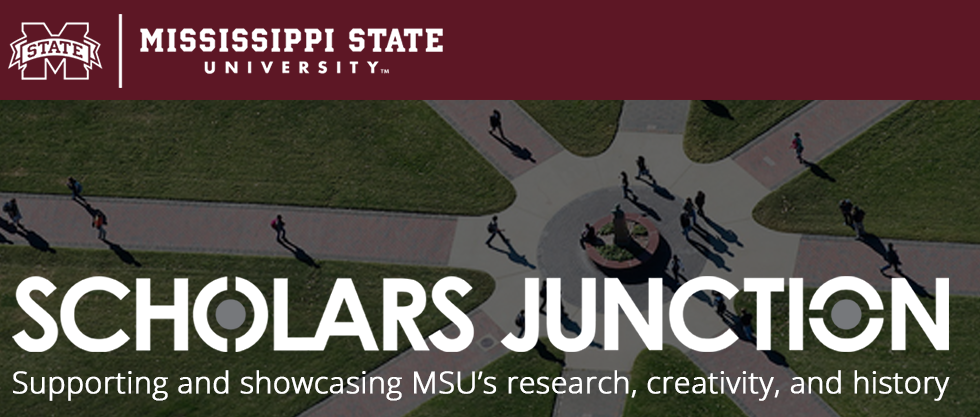Slide decks, recorded presentations, posters, and related materials produced by faculty, staff, and students affiliated with Mississippi State University's Libraries.
-

The Value of Oral Histories Beyond Discovery and Preservation
Neil Guilbeau, Hillary Richardson, and Nickoal Eichmann-Kalwara
Libraries seeking to become the “Heart of their Communities” can reach out to their residents through oral history projects. These projects not only document and preserve the social memory of Mississippi’s communities, but also strengthen the connection between residents and institutions that serve them. By seeking out and engaging participants for oral histories from all ethnic and socioeconomic backgrounds, libraries demonstrate to constituents that every voice matters, and effectively promote available resources while garnering a broader public support. Mississippi State University Libraries is currently conducting two oral history projects: the Starkville Civil Rights Project and the Mississippi Veterans Oral History Project. Using these two projects as examples, this presentation will demonstrate how libraries can connect to their communities, describe the methods and resources needed to undertake an oral history project, and list the benefits of creating oral histories in the library.
-

It's Not Unusual: Glee and the Mainstream Acceptance of Spontaneous Public Performance
Elizabeth M. Downey
When Glee debuted in 2009, the genre of the television musical series had a shaky history. Traditional episodic programs had previously aired musical episodes but these were seen as rare absurdities; the genre was an oddity to exploit on occasion, not something that could sustain an entire series (a belief proven when previous attempts had failed). The flash mob culture that emerged in the mid-2000s alongside the groundswell of social media changed this environment. The absurdity of people “bursting into song” in a public place was no longer a completely unrealistic scenario, and this reopened the door for the musical genre on television.
In this paper I argue that the viral spread of flash mobs and other spontaneous public performances generated an atmosphere in which the musical genre could succeed, and Glee directly benefited from this. In turn, Glee brought the underground culture of flash mobs to the mainstream, increasing the acceptance and even participation in music and other art in public spaces. Using examples drawn from both Glee performances and real-life flash mobs I hope to illustrate how the show, in mirroring a viral trend, helped to increase the overall popularity and approval of publicly accessible and participatory art by the mainstream culture.
-

So You Think You Can Dance: The Phenomenon of Library Flash Raves
Elizabeth M. Downey
Libraries have long been held to a certain stereotype, as being sedate and formal locales meant for tranquil study and quiet reflection. In popular culture this stereotype has been reinforced when that quiet scene is disrupted by song and dance; movies such as The Music Man and The Breakfast Club, television shows like Glee and music videos depict patrons and even staffers frolicking in the stacks and dancing on the desks. More recently the phenomenon of “flash mobs” and their sister flash raves have reflected the movie musical archetype of bursting into song in an otherwise ordinary setting. The flash rave has reached the hallowed halls of academia, primarily promoted as a stress reliever during final exam periods. While some have been true “flash” mobs, with students descending unannounced upon campus libraries and learning commons, others have been welcomed and even sanctioned by library administrations. Flash mobs and modern libraries also happen to share a common thread; the adoption of social media tools to organize, collaborate and share information. This paper will examine the depiction of dancing in the library, the evolution of the library flash rave, and how libraries are utilizing these raves and their social networking origins as tools for promotion of library services, student outreach and campus recruitment.
-

Basic and Automated: Why Two ETD Templates at Mississippi State University
Mary Ann Jones, Damen Peterson, and James Nail
-

Using Journal Evaluation as a Gateway to Collaboration
Mary Ann Jones
Mississippi State University Libraries faced three consecutive years of journal cancellations. We looked at different ways to evaluate the remainder of our journal subscriptions by collaborating with campus constituents. We believed that by assessing the outcomes of our last journal evaluation, we could design and implement an easier and more efficient evaluation mechanism to be used across campus in determining the usefulness of the remaining journal subscription list. This poster describes the 2011 state of journal cancellations, the last journal evaluation completed in 2007, how we used the data gathered in 2007 to make cancellation decisions, and what changes need to be made to the next evaluation to make it more successful in the minds of campus constituents and easier to administer for the library faculty and staff.


